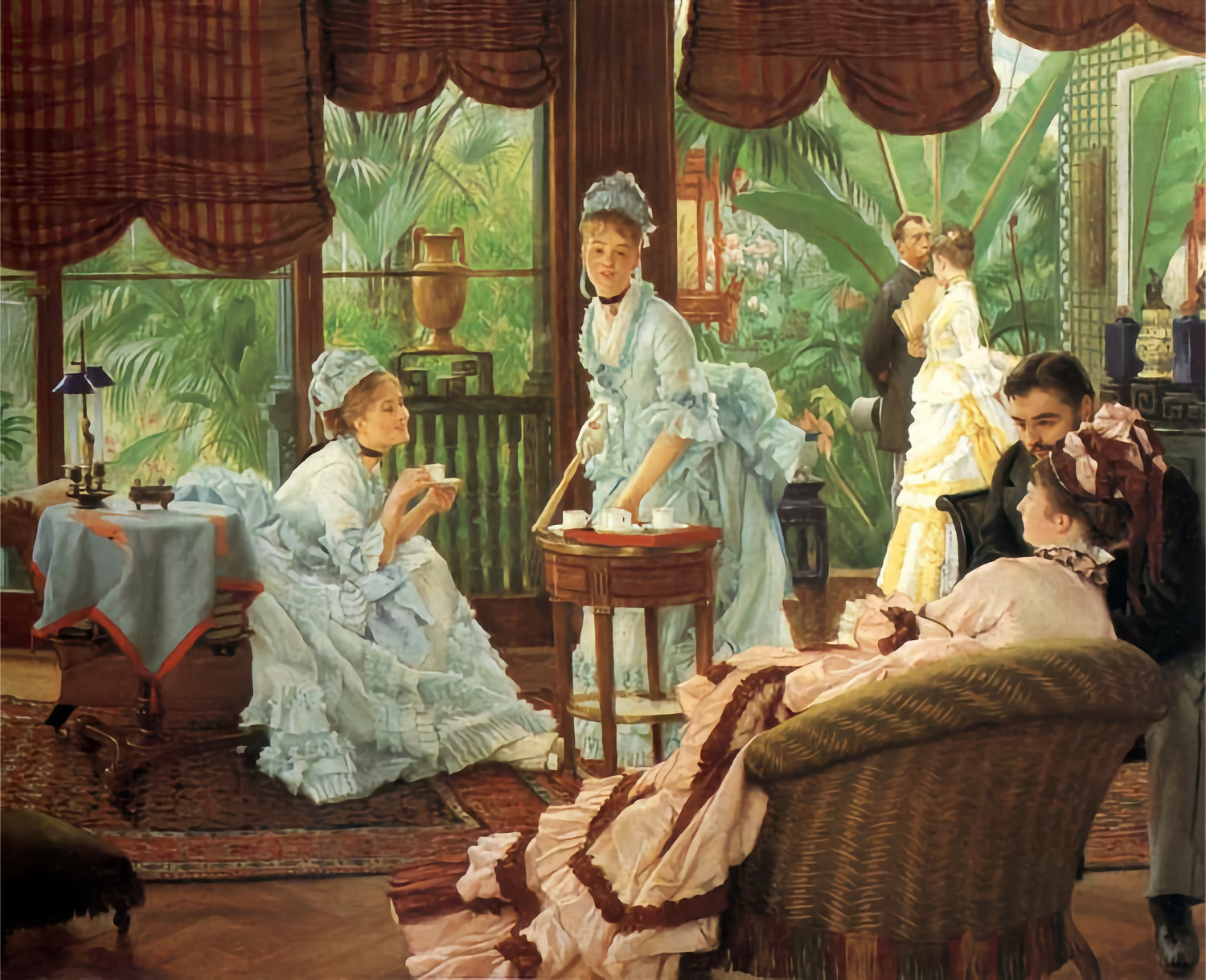
In the Conservatory, 1878
James Tissot’s "In the Conservatory, 1878" is a striking example of the artist’s ability to blend elegant fashion, social commentary, and intricate detail into a single composition. Painted during the height of Tissot’s career, this work captures a moment of quiet sophistication within a lush, enclosed garden space, reflecting the artist’s fascination with contemporary Parisian society. The painting depicts a well-dressed woman seated gracefully in a conservatory, surrounded by an abundance of exotic plants. She wears a fashionable Victorian-era gown adorned with ruffles and delicate lace, her poised demeanor exuding refinement. Tissot’s meticulous rendering of textures—seen in the folds of the fabric, the dappled light on the leaves, and the soft shadows—demonstrates his exceptional attention to detail.
The conservatory, a symbol of wealth and leisure in the late 19th century, serves as an intimate yet sophisticated backdrop. It reflects the era’s fascination with nature and botany, as well as the bourgeois elite’s desire to create indoor retreats filled with exotic flora. Tissot’s mastery of light and color is evident in the way natural sunlight filters through the glass, casting a warm glow on the woman’s pale complexion and the surrounding greenery. Although the setting is serene, there is an air of contemplation in the woman’s expression. Her slightly distant gaze suggests introspection or perhaps a quiet moment of solitude. This subtle emotional nuance adds depth to the painting, making it more than just a portrait of leisure—it becomes a glimpse into the private thoughts of an individual within the rigid social structures of the time.
Tissot’s "In the Conservatory, 1878" is characteristic of his ability to capture the refinement and elegance of the French upper class while also hinting at deeper emotional undercurrents. His precise, yet painterly technique makes the scene feel both intimate and luxurious, a hallmark of his distinctive style. Today, the painting remains a testament to Tissot’s keen observational skills and his talent for blending realism with a touch of narrative intrigue.
